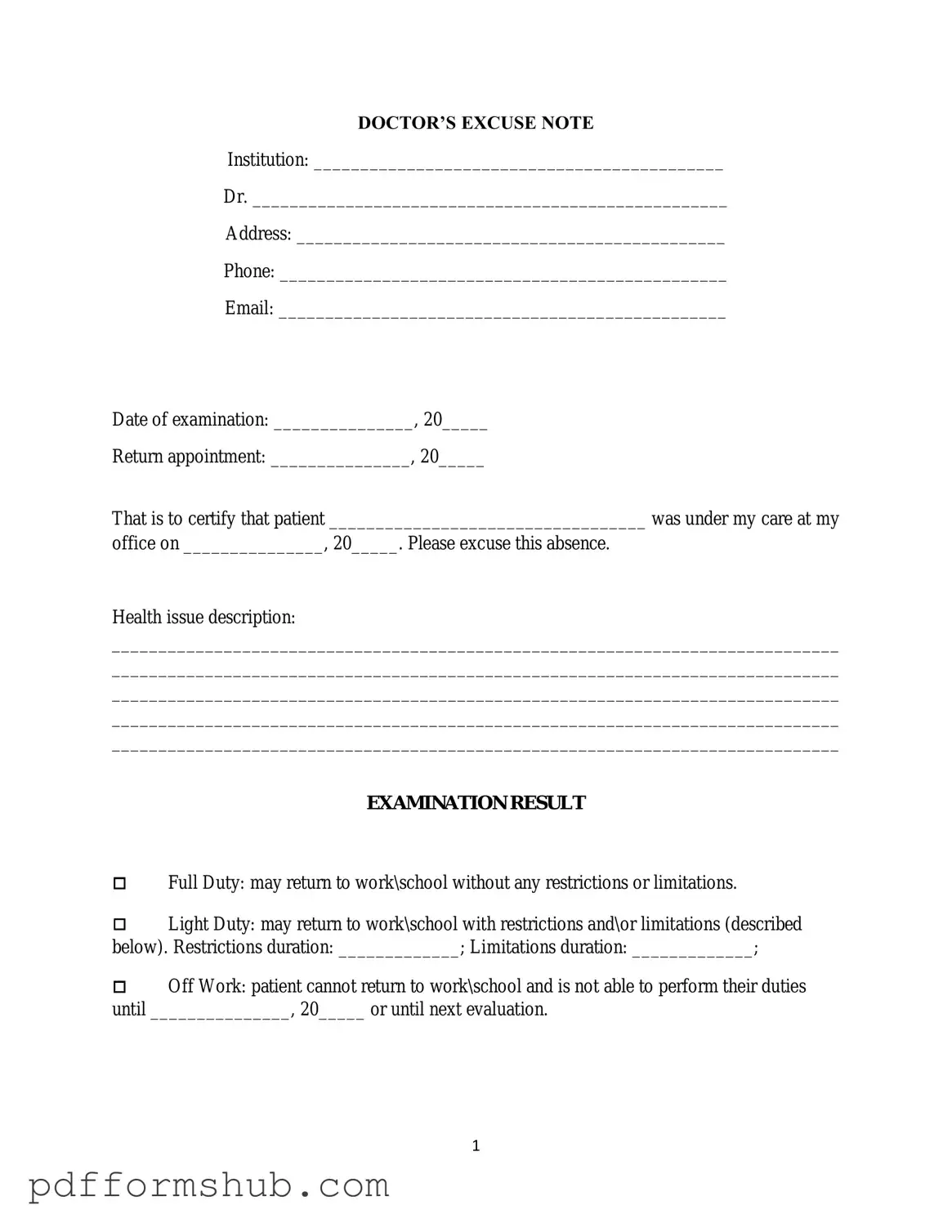When it comes to managing health-related absences from work or school, a Doctor's Excuse Note serves as an essential tool for both individuals and institutions. This form is typically issued by a licensed medical professional and provides a written confirmation that a patient was unable to attend their regular activities due to health issues. It includes key details such as the patient's name, the date of the appointment, and the specific dates for which the excuse is valid. Additionally, it may outline any recommendations for rest or follow-up care, ensuring that employers or educational institutions understand the necessity of the absence. By offering a clear and formal acknowledgment of a medical condition, the Doctor's Excuse Note helps protect the rights of individuals while also maintaining accountability within workplaces and schools. Understanding the importance and proper usage of this form can facilitate smoother communication between patients, healthcare providers, and employers or educational institutions, ultimately supporting a healthier, more productive environment.
